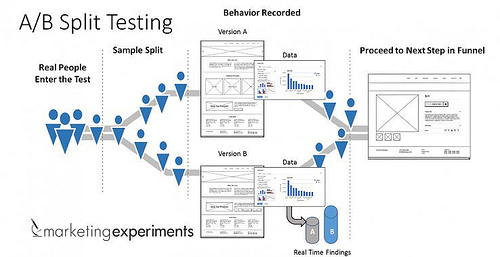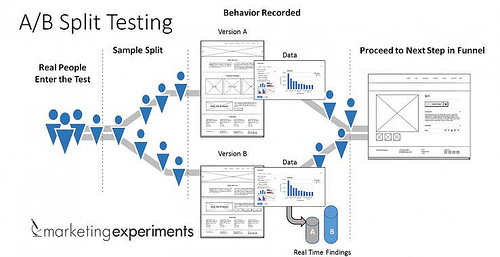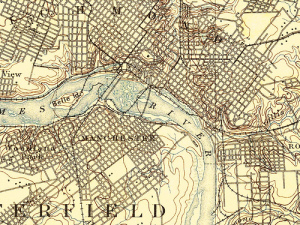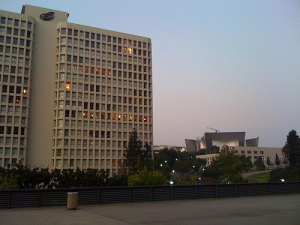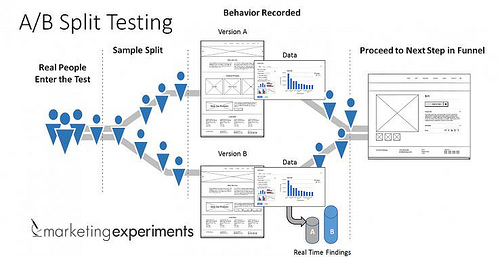The last decade of the 20th century witnessed
the use of Internet.
The first decade of the 21st century has seen
the rise of wireless connectivity.
Wireless networking is now commonplace mobile
connectivity is becoming a rule, not an exception.
But getting there was not as easy as it may seem
today.
Wireless networking requires […]
Read More...
The last decade of the 20th century witnessed
the use of Internet.
The first decade of the 21st century has seen
the rise of wireless connectivity.
Wireless networking is now commonplace mobile
connectivity is becoming a rule, not an exception.
But getting there was not as easy as it may seem
today.
Wireless networking requires a basic understanding
of the world of Radio Frequency (RF) where
concepts like channel planning, cell sizes and
frequency reuse are the norm.
In this white paper, we have discussed the
three phases of WLAN architecture evolution i.e.
WLAN for convenience (limited adoption),
WLAN as the network of choice (instead of wires)
and WLAN for business critical applications.
We have also compared legacy microcell architectures
to Meru's Air Traffic Control architecture and
provided guidance on selection of the right
architecture.
Phase 1: Infancy "Wireless LAN Network of Convenience"
In early 2000, wireless LANs were deployed in a
limited fashion to enable convenient mobile access for
workers with laptops, without the need to plug into
the network. For many networks the primary application
was casual access to email and the Internet,
for both guests and employees.
The solution to this problem was groundbreaking:
plug in wireless access points (APs),
wherever network access was needed.
These access points were deployed in standalone mode
for providing connectivity to a few users.
Soon the demand on the network increased as more
and more users wanted to use the standalone access
point for wireless access. Adding access points
to improve the coverage area and capacity required
careful selection of non-overlapping channels to avoid
interference between access points.
IEEE 802.11 APs operate in an unlicensed RF
spectrum-specifically, the 2.4GHz and 5GHz Industrial,
Science, and Medicine (ISM) bands.
The 2.4 GHz band is also used by microwave ovens,
cordless phones and many other wireless devices.
This band is divided up into three distinct,
non-overlapping channels, known as channels 1, 6 and 11.
APs operating physically close to each other and on the
same channel interfere with one another.
Adding more APs to boost capacity causes interference
between new and old APs and actually reduces the overall
aggregate capacity of the network. One approach to
avoiding co-channel interference was to follow the
typical hexagonal cell tiling model,
borrowed from the cellular world, which allows the
three channels to be separated as far as physically
possible.
Phase 2:
Adolescence "Wireless LAN-Network of Extending Coverage"
Microcells Enable Enterprise Wireless Adolescence In 2004,
IEEE 802.11g enterprise grade WLAN access points were
introduced to the market.
OFDM-based 802.11g operates at a maximum raw data rate
of 54 Mbps but has the same number of non-overlapping
channels as 802.11b.
The 802.11g standard provided some increase in available
throughput but was not enough to meet the growing
requirements of the wireless network.
Most 802.11g access points delivered 22-27Mbps.
The hexagon tiling approach worked to a certain point.
In 2004-2005, the wireless network usage model began
to shift from one of casual access, to one in which
wireless is used for providing connectivity in areas
where it was not possible to draw wires.
This made WLAN access an integral part of the
enterprise-network, now for business critical operations.
The number of users on the network started increasing and
it was no longer possible to meet the requirement of a
growing network using the hexagonal tiling approach
alone.
Hexagonal tiling was combined with limiting the access
point power settings in the microcell approach since a
microcell is basically a smaller cell-created by turning
down the power level of the radio.
Smaller cells mean that more APs can be packed into the
building without increasing the interference since the
relative distances between the APs stay the same.
Microcells,
while solving the capacity issue to some extent,
introduce several other problems in the network such
as latency due to frequent hand-offs,
interference from non-802.11 devices,
and more coverage holes.
Most importantly, it increases the number of APs by
20 which has a direct impact on the cost of the
WLAN infrastructure.
Trade-off between coverage holes and load-balancing
To provide ubiquitous access,
coverage holes need to be filled.
One approach is to selectively increase the power levels
of the cells
wherever coverage holes are detected. This results in
irregular hexagonal tiling pattern and makes it difficult
to use dynamic RF load balancing features.
RF load balancing features were first introduced in the
products so that the RF environment could readjust itself
if interference occurred. But if the coverage of some
access points are selectively adjusted to eliminate
dead spots,
dynamic RF load balancing can not function properly.
So, either RF load balancing is disabled or coverage
holes are ignored.
Smaller cells result in more frequent handoffs between
cells.
While frequent hand-off does not affect data clients,
latency significantly disrupts for voice communication.
The more APs a client sees, the more they may choose to
hand off-especially if the loads on the APs vary.
Signal resiliency is sacrificed
Lower signal strength reduces the signal-to-noise ratio,
allowing interference from other 802.11 sources and
non-802.11 sources (such as Bluetooth and microwave ovens)
to become more disruptive to the network.
The microcell architecture results in 20-30% more APs.
While it serves the vendors selling this architecture well,
it significantly increases the cost of the equipment
(more access points as well as bigger controllers),
channel planning and design, and post deployment
RF channel management issues.
Phase 3: WLAN : Network of Choice
Air Traffic Control: The Solution for Mature Enterprise
WLANs
Air Traffic Control addresses the problems that legacy
microcell architectures are unable to solve.
Air Traffic Control has several elements, each designed
to overcome a problem introduced by the microcell
deployments.
Virtual Cells
Instead of attempting to avoid co-channel interference
between channels as in a microcell architecture,
the Air Traffic Control architecture uses the Virtual
Cell to eliminate co-channel interference by placing
all access points on one channel span and letting the
controller control a fully-coordinated,
distributed architecture.
To a client, all APs appear as one.
All APs are placed on the same channel with the
same Basic Service Set Identifier (BSSID),
as opposed to each AP having its own unique BSSID.
With the Virtual Cell,
co-channel interference elimination works to negate the
effects of the overlap by taking advantage of it instead
of avoiding it.
the use of Internet.
The first decade of the 21st century has seen
the rise of wireless connectivity.
Wireless networking is now commonplace mobile
connectivity is becoming a rule, not an exception.
But getting there was not as easy as it may seem
today.
Wireless networking requires a basic understanding
of the world of Radio Frequency (RF) where
concepts like channel planning, cell sizes and
frequency reuse are the norm.
In this white paper, we have discussed the
three phases of WLAN architecture evolution i.e.
WLAN for convenience (limited adoption),
WLAN as the network of choice (instead of wires)
and WLAN for business critical applications.
We have also compared legacy microcell architectures
to Meru's Air Traffic Control architecture and
provided guidance on selection of the right
architecture.
Phase 1: Infancy "Wireless LAN Network of Convenience"
In early 2000, wireless LANs were deployed in a
limited fashion to enable convenient mobile access for
workers with laptops, without the need to plug into
the network. For many networks the primary application
was casual access to email and the Internet,
for both guests and employees.
The solution to this problem was groundbreaking:
plug in wireless access points (APs),
wherever network access was needed.
These access points were deployed in standalone mode
for providing connectivity to a few users.
Soon the demand on the network increased as more
and more users wanted to use the standalone access
point for wireless access. Adding access points
to improve the coverage area and capacity required
careful selection of non-overlapping channels to avoid
interference between access points.
IEEE 802.11 APs operate in an unlicensed RF
spectrum-specifically, the 2.4GHz and 5GHz Industrial,
Science, and Medicine (ISM) bands.
The 2.4 GHz band is also used by microwave ovens,
cordless phones and many other wireless devices.
This band is divided up into three distinct,
non-overlapping channels, known as channels 1, 6 and 11.
APs operating physically close to each other and on the
same channel interfere with one another.
Adding more APs to boost capacity causes interference
between new and old APs and actually reduces the overall
aggregate capacity of the network. One approach to
avoiding co-channel interference was to follow the
typical hexagonal cell tiling model,
borrowed from the cellular world, which allows the
three channels to be separated as far as physically
possible.
Phase 2:
Adolescence "Wireless LAN-Network of Extending Coverage"
Microcells Enable Enterprise Wireless Adolescence In 2004,
IEEE 802.11g enterprise grade WLAN access points were
introduced to the market.
OFDM-based 802.11g operates at a maximum raw data rate
of 54 Mbps but has the same number of non-overlapping
channels as 802.11b.
The 802.11g standard provided some increase in available
throughput but was not enough to meet the growing
requirements of the wireless network.
Most 802.11g access points delivered 22-27Mbps.
The hexagon tiling approach worked to a certain point.
In 2004-2005, the wireless network usage model began
to shift from one of casual access, to one in which
wireless is used for providing connectivity in areas
where it was not possible to draw wires.
This made WLAN access an integral part of the
enterprise-network, now for business critical operations.
The number of users on the network started increasing and
it was no longer possible to meet the requirement of a
growing network using the hexagonal tiling approach
alone.
Hexagonal tiling was combined with limiting the access
point power settings in the microcell approach since a
microcell is basically a smaller cell-created by turning
down the power level of the radio.
Smaller cells mean that more APs can be packed into the
building without increasing the interference since the
relative distances between the APs stay the same.
Microcells,
while solving the capacity issue to some extent,
introduce several other problems in the network such
as latency due to frequent hand-offs,
interference from non-802.11 devices,
and more coverage holes.
Most importantly, it increases the number of APs by
20 which has a direct impact on the cost of the
WLAN infrastructure.
Trade-off between coverage holes and load-balancing
To provide ubiquitous access,
coverage holes need to be filled.
One approach is to selectively increase the power levels
of the cells
wherever coverage holes are detected. This results in
irregular hexagonal tiling pattern and makes it difficult
to use dynamic RF load balancing features.
RF load balancing features were first introduced in the
products so that the RF environment could readjust itself
if interference occurred. But if the coverage of some
access points are selectively adjusted to eliminate
dead spots,
dynamic RF load balancing can not function properly.
So, either RF load balancing is disabled or coverage
holes are ignored.
Smaller cells result in more frequent handoffs between
cells.
While frequent hand-off does not affect data clients,
latency significantly disrupts for voice communication.
The more APs a client sees, the more they may choose to
hand off-especially if the loads on the APs vary.
Signal resiliency is sacrificed
Lower signal strength reduces the signal-to-noise ratio,
allowing interference from other 802.11 sources and
non-802.11 sources (such as Bluetooth and microwave ovens)
to become more disruptive to the network.
The microcell architecture results in 20-30% more APs.
While it serves the vendors selling this architecture well,
it significantly increases the cost of the equipment
(more access points as well as bigger controllers),
channel planning and design, and post deployment
RF channel management issues.
Phase 3: WLAN : Network of Choice
Air Traffic Control: The Solution for Mature Enterprise
WLANs
Air Traffic Control addresses the problems that legacy
microcell architectures are unable to solve.
Air Traffic Control has several elements, each designed
to overcome a problem introduced by the microcell
deployments.
Virtual Cells
Instead of attempting to avoid co-channel interference
between channels as in a microcell architecture,
the Air Traffic Control architecture uses the Virtual
Cell to eliminate co-channel interference by placing
all access points on one channel span and letting the
controller control a fully-coordinated,
distributed architecture.
To a client, all APs appear as one.
All APs are placed on the same channel with the
same Basic Service Set Identifier (BSSID),
as opposed to each AP having its own unique BSSID.
With the Virtual Cell,
co-channel interference elimination works to negate the
effects of the overlap by taking advantage of it instead
of avoiding it.
Related Posts
-
 MBA admissions 2011: FAQs on AICTE approved B-schools
On March 17, hearing the plea made by three petitioners – EPSI, AIMS and
MBA admissions 2011: FAQs on AICTE approved B-schools
On March 17, hearing the plea made by three petitioners – EPSI, AIMS and -
 San Diego Campgrounds
San Diego Campgrounds San Diego RV Campgrounds are much more basic, and while they
San Diego Campgrounds
San Diego Campgrounds San Diego RV Campgrounds are much more basic, and while they -
 Online Traffic School Course To Dismiss Your Traffic Ticket
Taking a Online traffic school course is the only way to get rid of
Online Traffic School Course To Dismiss Your Traffic Ticket
Taking a Online traffic school course is the only way to get rid of -
 Reduction of Speed Bumps
Speed bumps are a pain for drivers in the UK, as although they were
Reduction of Speed Bumps
Speed bumps are a pain for drivers in the UK, as although they were -
 How to Start a Traffic School
Have you ever been to a traffic violator school class and said to yourself,
How to Start a Traffic School
Have you ever been to a traffic violator school class and said to yourself, -
 Too Many Traffic Tickets in a Short Time Period
There are some severe consequences you can face if you receive several traffic tickets
Too Many Traffic Tickets in a Short Time Period
There are some severe consequences you can face if you receive several traffic tickets -
 Gain More Information on Accredited Online Cosmetology Schools
For being a cosmetologist will need some coaching and obtaining a certificate in state.
Gain More Information on Accredited Online Cosmetology Schools
For being a cosmetologist will need some coaching and obtaining a certificate in state. -
 Why You Should Go To Online Traffic School
Traffic school can be a pain to attend, if you have regular commitments to
Why You Should Go To Online Traffic School
Traffic school can be a pain to attend, if you have regular commitments to



